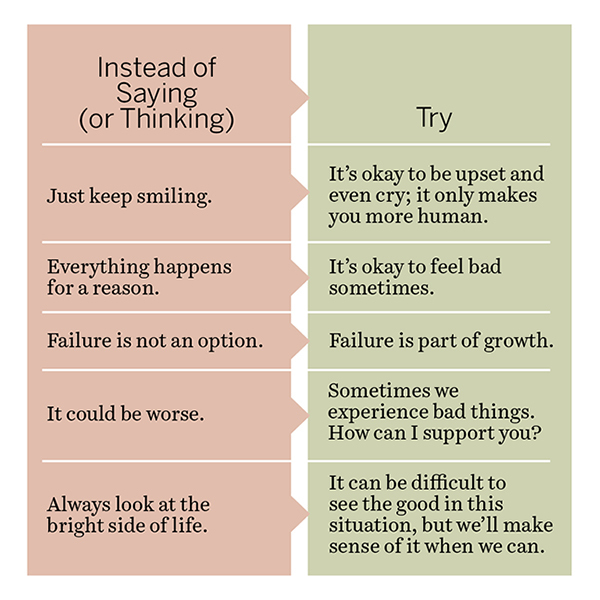Examples of Toxic Positivity and How to Reframe Them
Getty/Mikhail Seleznev
Toxic positivity goes way beyond having a positive outlook. Consider examples of toxic positivity and how to reframe them.
Maintaining a positive outlook can help you stay sane during a crisis. However, it’s very easy to become so focused on staying positive that you end up denying any and all negative experiences that are part of the universal human experience. It becomes a toxic positivity.
Anne Silva, CEO and founder of Tanglaw Mental Health, defines toxic positivity as “the excessive and ineffective overgeneralization of a happy and optimistic state at the expense of negative emotions and states that are part of our genuine human emotional experience.” She adds, “When an individual is exhibiting toxic positivity, they deny negative experiences—be it in themselves or in other people.”
[Read: “Owning Our Sacred Rage.”]
Toxic positivity can be manifested both inward and outward, depending on your individual personality. If you tend to internalize your feelings, you can often feel guilty for feeling a negative emotion like anger or sadness, so you choose to hide behind a mask as an attempt to diminish—or even dismiss—your true feelings. If you tend to project your feelings onto others, you may easily dismiss or minimize others’ negative feelings by telling them to focus solely on the positive.
Examples of Toxic Positivity
Those who show signs of toxic positivity behave or speak in such a way that does not accept any negative emotion being experienced by themselves or others. For example, if someone asks why they are crying, they might respond with “I’m fine“ or “I just got something in my eye.” Another example of toxic positivity is when a friend is visibly crying, and the toxic positivist either ignores them or says something like “Cheer up!”
If you recognize that you tend to minimize or walk away from painful emotions, Silva suggests you give a response that validates and comforts—not coddles—an individual’s negative experience and emotion, especially when they are sharing it with you. “It doesn’t matter how you respond, as long as validation and support is provided.”
How to Reframe Toxically Positive Responses
Silva gives these five examples of how to reframe a positive response that's toxic into one that is more supportive and validating.

As Silva reminds us, “Toxic positivity can manifest in various situations—be it as small as between two friends or as big as the toxic political climate. During quarantine, one of the most apparent reflections of toxic positivity is the way national governments are handling their response measures in their respective countries.”
In the short term, you may feel an understandable need to put on a smiling face in public in order to get through the workday or avoid a mini-meltdown at, say, the grocery store. But as Angie Fadel of Soul-Care observes, this strategy can have long-term consequences for your mental health.
Making Space for the Hard Stuff
“I think the thing about toxic positivity that can reel people in,” says Fadel, “is that it doesn’t leave appropriate space for really any hard feelings at all. If you counter toxic positivity with a difficult feeling, there is always someone worse off than you—so that’s a nonstarter. And for people who can’t engage in difficult and vulnerable feelings, any feeling that isn’t positive feels huge! If we never let the hard stuff out with reflection and care, then every little feeling from the big to the small can feel potentially unmanageable.”
Toxic positivity should not be confused with those who naturally have an optimistic outlook or possess a sunny disposition. These people tend to look for and focus on the upside of life but will embrace all of our humanity, which includes not dismissing those times when we are feeling down.
Read more: "4 Ways to Improve Your Empathy."


